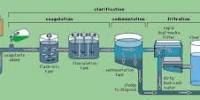According to academics, tidal range plans are financially feasible and could reduce energy costs. The School of Engineering at Lancaster University and the UK Centre coupled a tidal range power generation model and its cost model in research for Ecology and Hydrology to show the viability of tidal power.
Professor George Aggidis, Head of Energy Engineering at Lancaster University, said: “The obvious question for the UK, with one of the best tidal resources globally, is why haven’t we already got a tidal barrage scheme?”
The study that was published in Energy highlights the advantages of tidal energy, which does not experience unpredictably intermittent generation because power is produced day and night.
To address future demand and storage issues, a tidal barrage might be constructed and operated for at least 120 years.
Our studies show that with modern technology and operating procedures, estuarine barrages are the only practical way to protect these vital habitats. Coastal lagoons have also been proposed for several locations around Britain’s coast. Schemes will provide jobs in construction and manufacturing for generations to come as well as opportunities for transport, communication, conservation, and recreation. In the long-term they will provide reliable power with reduced costs.
Professor George Aggidis
Professor Aggidis said: “There is an urgent need to kick-start the selection and development of schemes around Britain. Tidal range generation is predictable renewable energy driven by the gravitational pull of the moon and sun. The environmental and economic benefits are huge as barrages can protect coastal areas from flooding and sea level rise. With two-way generation and pumping, the full range of existing tides can be maintained within impoundments to protect and support low-lying intertidal areas such as saltmarshes and mudflats.”
“Our studies show that with modern technology and operating procedures, estuarine barrages are the only practical way to protect these vital habitats. Coastal lagoons have also been proposed for several locations around Britain’s coast. Schemes will provide jobs in construction and manufacturing for generations to come as well as opportunities for transport, communication, conservation, and recreation. In the long-term they will provide reliable power with reduced costs.”
The UK has the second-highest tidal range in the world, which gives it some degree of price independence as well as long-term access to affordable clean power.
Currently the Tidal Range projects under commercial consideration offer an achievable 10 GW installed capacity, delivering over 20TWh/y, about 5% of UK energy use. There is the possibility to further extend this installed capacity by over 4 to 5 times with other tidal range project sites throughout the UK, depending on the availability of UK-relevant resources.
Such advancements are necessary to help the UK replace fossil fuel power plants and cut its carbon emissions.
The current UK total generating capacity is around 42.8 GW that includes fossil fuels (19.2GW, 44.9%), renewables (16.5GW, 38.5%), and low carbon (7.1GW, 16.6%). The La Rance Tidal Range plant in France now produces the EDF fleet’s least expensive electricity, which is less expensive than nuclear.
















